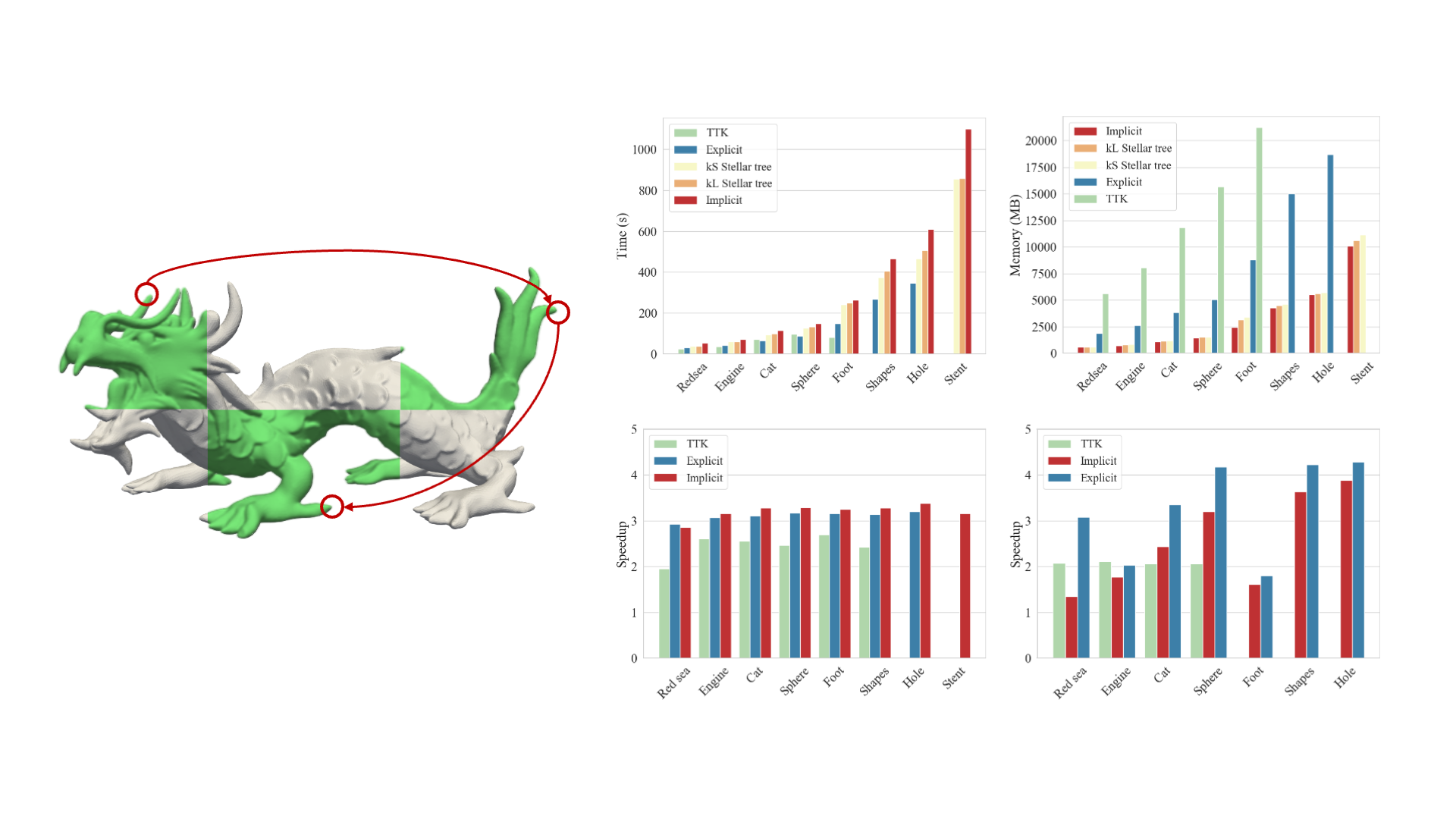TopoCluster: A Localized Data Structure for Topology-based Visualization
Guoxi Liu, Federico Iuricich, Riccardo Fellegara, Leila De Floriani
View presentation:2022-10-20T20:57:00ZGMT-0600Change your timezone on the schedule page
2022-10-20T20:57:00Z

Prerecorded Talk
The live footage of the talk, including the Q&A, can be viewed on the session page, Topology.
Fast forward
Keywords
Data visualization, data structures, topological data analysis, simplicial meshes, tetrahedral meshes
Abstract
Unstructured data are collections of points with irregular topology, often represented through simplicial meshes, such as triangle and tetrahedral meshes. Whenever possible such representations are avoided in visualization since they are computationally demanding if compared with regular grids. In this work, we aim at simplifying the encoding and processing of simplicial meshes. The paper proposes TopoCluster, a new localized data structure for tetrahedral meshes. TopoCluster provides efficient computation of the connectivity of the mesh elements with a low memory footprint. The key idea of TopoCluster is to subdivide the simplicial mesh into clusters. Then, the connectivity information is computed locally for each cluster and discarded when it is no longer needed. We define two instances of TopoCluster. The first instance prioritizes time efficiency and provides only modest savings in memory, while the second instance drastically reduces memory consumption up to an order of magnitude with respect to comparable data structures. Thanks to the simple interface provided by TopoCluster, we have been able to integrate both data structures into the existing Topological Toolkit (TTK) framework. As a result, users can run any plugin of TTK using TopoCluster without changing a single line of code.